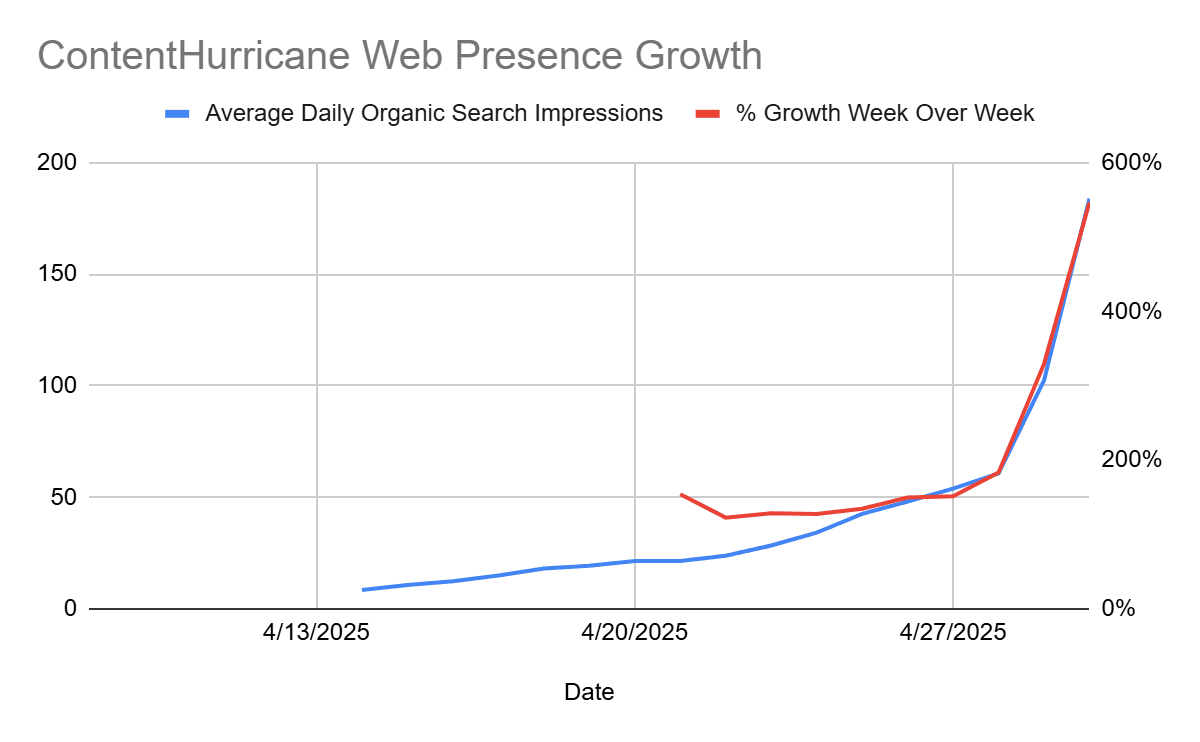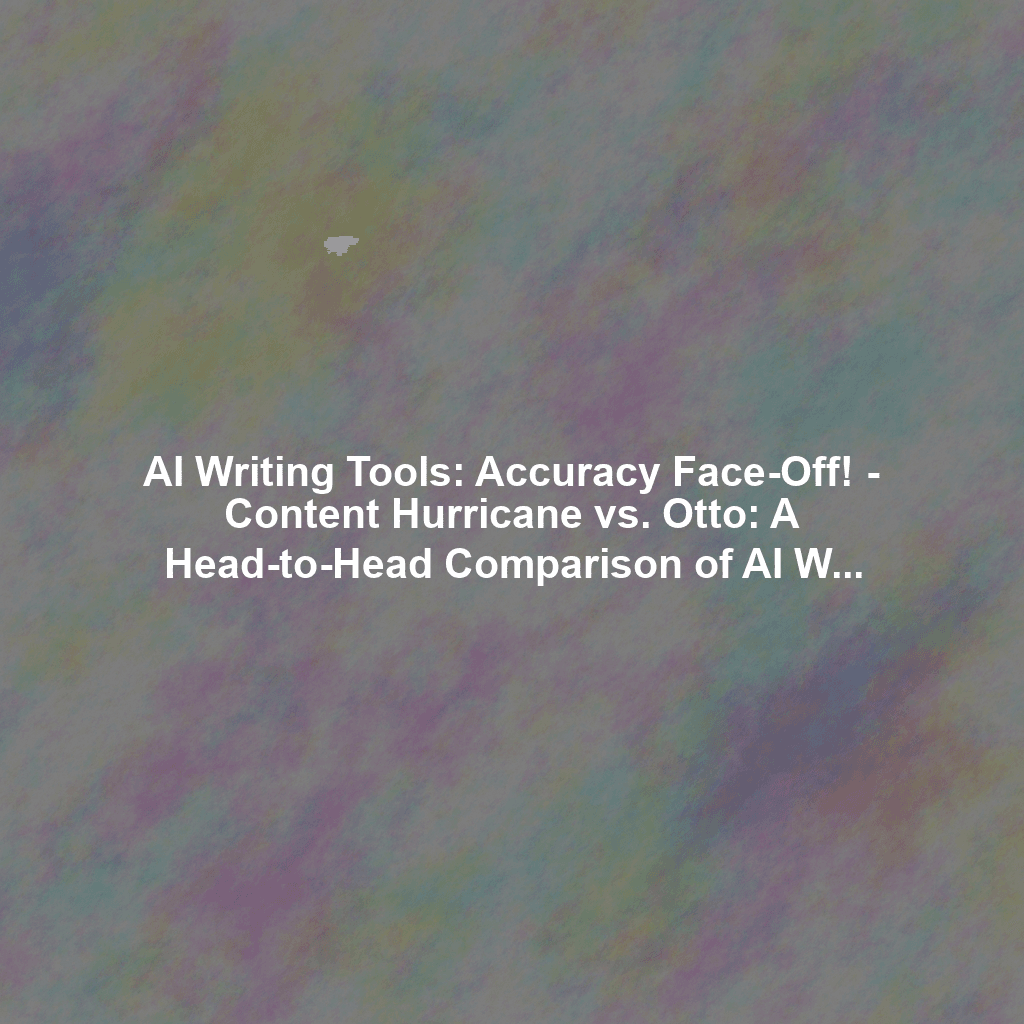As a founder, you learn to spot opportunities—and sometimes, those opportunities spring from your own frustrations. That’s exactly how Content Hurricane began: a mix of a significant market need, my own technical background, and a healthy dose of pure, unadulterated laziness.
My career has always orbited around data, efficiency, and driving tangible outcomes. From a math degree at Dartmouth to an MBA from Harvard Business School, then navigating the complex worlds of McKinsey, Bain Capital, and Greenlight, before stepping into leadership roles as CFO at Kyx and Fusion Transport, and eventually CEO at IdeaScale—the common thread was always about optimizing for ROI and making impactful, often risky, decisions based on solid analysis. It’s a mindset that prioritizes direct results over elaborate processes.
The Genesis: Recognizing the Content Vacuum
One challenge I consistently observed across businesses was the struggle with content marketing. Everyone knew they needed it. Quality content drives inbound leads, boosts SEO, and establishes authority. Yet, the reality for most companies is a fragmented, inefficient approach. They either outsource to expensive agencies, hire in-house teams that struggle with scale, or rely on generic, uninspired content that disappears into the digital ether.
The problem wasn’t just about generating content; it was about generating *high-quality, expert-level, scalable, and ROI-driving* content. Most solutions fell short, providing volume without substance or substance without scale. This gap presented a clear opportunity.
From Python Scripts to a Content Machine
Given my semi-technical background—I enjoy dabbling in code and can certainly write a script or two—my initial impulse wasn’t to build a company. It was to solve my own problem. I realized that if content marketing was going to truly move the needle, it needed to be systematized and automated without sacrificing quality.
I started with the following process:
- I have a good idea that I want to write about
- I go to chatgpt to write it up and write a prompt to write an article about my good idea
- ChatGPT gives me some poorly written generic sounding stuff that starts with platitudes like “in today’s competitive landscape”
- I itereate with ChatGPT 5-10x to elimiante generic language, get more original thinking , and make it sound better
- I then copy paste the text from ChatGPT into my content management system (wordpress, webflow, sopify, etc.) and schedule it for publishing
The results were great, but really frustrating since I was taking 5-10 hours to do this PER POST and I was doing this repetitively. And Ithink I’m a reasonably fast writer and typer – so this meant that many people doing something like the above would be taking 2-3x longer than it takes me.
There’s a fundamental principle of technology: any repeated process should be automated.
So, one weekend, fueled by some mushroom coffee and a desire to test my own programming skills, I wrote up a bunch of Python code to try to automate the entire process. My goal was ambitious: automate the creation of blog posts that were extremely well-written, not generic AI garbage, and also SEO optimized to align with Google’s E-E-A-T (Experience, Expertise, Authoritativeness, Trustworthiness) standards. I wanted content that search engines would love and, more importantly, human readers would find genuinely valuable. ANd I want to be able to do it repeatedly with just a minute of work.
It took me about 20 hours to write and debug the code, and improve the quality of the filtering mechanisms so I was getting great stuff out.
The early results were, frankly, awesome. The scripts I wrote began churning out blog posts for Content Hurricane’s own blog. This initial content demonstrated significant traction: increased organic traffic, better engagement, and a clear path to inbound leads. It proved the core hypothesis: AI, when specifically trained and applied with strategic intent, could indeed produce expert-level content that delivers measurable business outcomes.
The “Lazy” Catalyst: The Need for Simplicity
But here’s where my “laziness” came into play—and it was a critical turning point. While the Python scripts were powerful and effective, running them was a pain. It involved diving into a black screen, typing commands, and waiting for the magic to happen. For someone who values efficiency and abhors unnecessary friction, this was deeply annoying. I’m not a software engineer, I don’t like living in code/IDEs/visual studio/Intellij/VIM. I want a pretty user interface that I can use one handed while walking.
I realized that for this powerful technology to be truly accessible and impactful for businesses beyond just a solo founder who codes, it couldn’t live in a command-line interface. It needed a user interface so simple, so intuitive, that anyone—regardless of their technical proficiency—could leverage its power.
Designing for “Stupid Simple”: Lessons from IdeaScale
This realization immediately brought me back to my time as CEO at IdeaScale. There, I led a product design team with a singular focus: radical simplification. We weren’t just tweaking features; we were rethinking the entire user experience to make complex functionality incredibly easy to grasp. This relentless pursuit of simplicity ultimately led to IdeaScale winning Gartner’s Customer Choice Award in 2014 (just 2 years after we weren’t even in the top 10)—a testament to the power of user-centric design.
I carried that exact philosophy into the development of Content Hurricane’s UI. We explicitly designed it to be “stupid simple.” The goal was not just ease of use, but extreme ease of use. Forget clunky interfaces with dozens of settings and toggles. We stripped away everything that wasn’t absolutely essential to achieving the core outcome: high-quality, scalable content. Yes, it makes it little black-boxy, but honestly, all software is black-boxy: do you have any idea how your phone even turns on (no, and you don’t want to modify settings to change it’s start-up parameters, or even want to know what those are).
How easy is it? Literally, it takes about one minute to generate a blog post. There are virtually zero settings to configure. No convoluted dashboards, no hidden menus.
You simply tell Content Hurricane what you need, and researches, writes, optimizes and publishes.
This design philosophy makes our powerful content marketing technology—which, remember, started as a few Python scripts I hammered out over a weekend—accessible to everyone, even those who might barely feel comfortable using a computer.
The underlying AI is sophisticated, trained specifically for expert-level content creation, SEO optimization, and E-E-A-T alignment. But the user experience is designed to completely abstract away that complexity. It’s about getting straight to the outcome: a continuous stream of high-quality blog posts driving inbound leads and website traffic.
The Outcome: Content Marketing on Autopilot
Our alpha testers have seen remarkable results, with some reporting a 142% increase in inbound leads within six months of using Content Hurricane. This isn’t just about publishing more; it’s about publishing smarter, faster, and with a direct impact on your bottom line.
Content Hurricane isn’t just a tool; it’s a paradigm shift in how businesses approach content marketing. It’s the culmination of understanding market needs, applying a technical edge, and obsessively focusing on user experience. It’s built for founders and marketing leaders who, like me, are tired of complexity and demand clear, measurable ROI from every investment.
Ready to experience true content marketing automation? Check out contenthurricane.com or try out our free trial and see how effortless expert-level content generation can be.
#ContentMarketing #AIContent #WordPressSEO #InboundMarketing #DigitalTransformation #SaaS
 Skip to content
Skip to content

